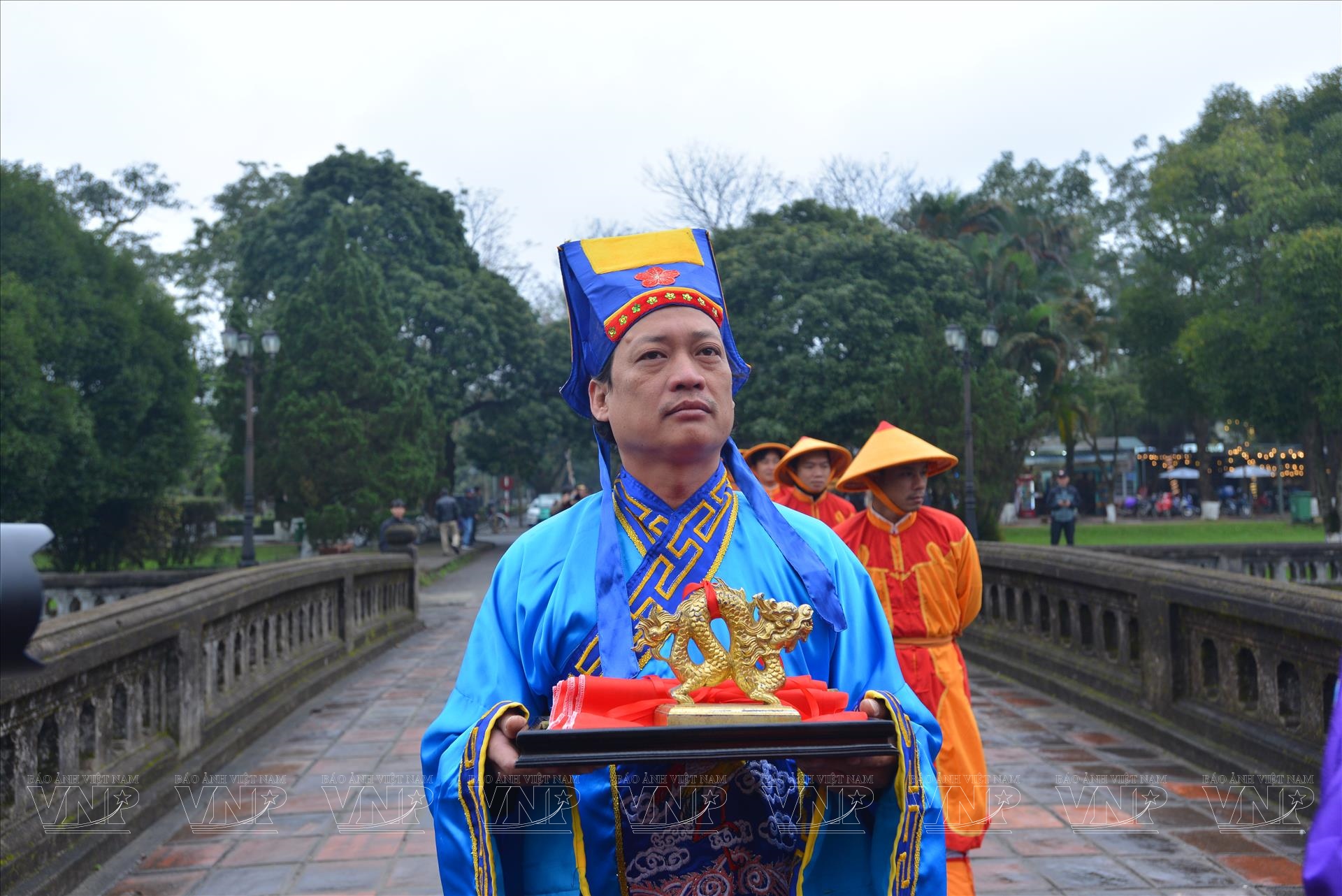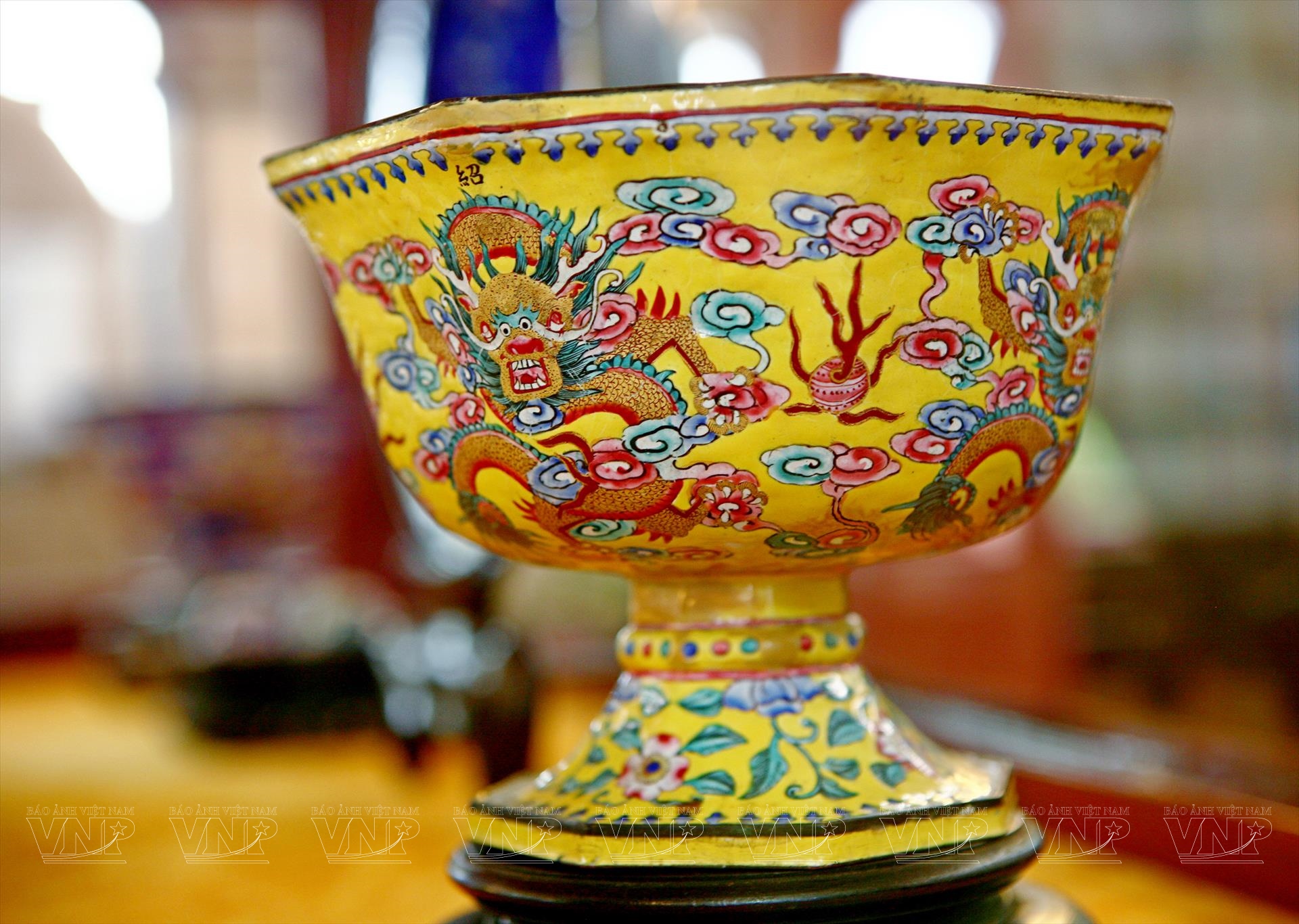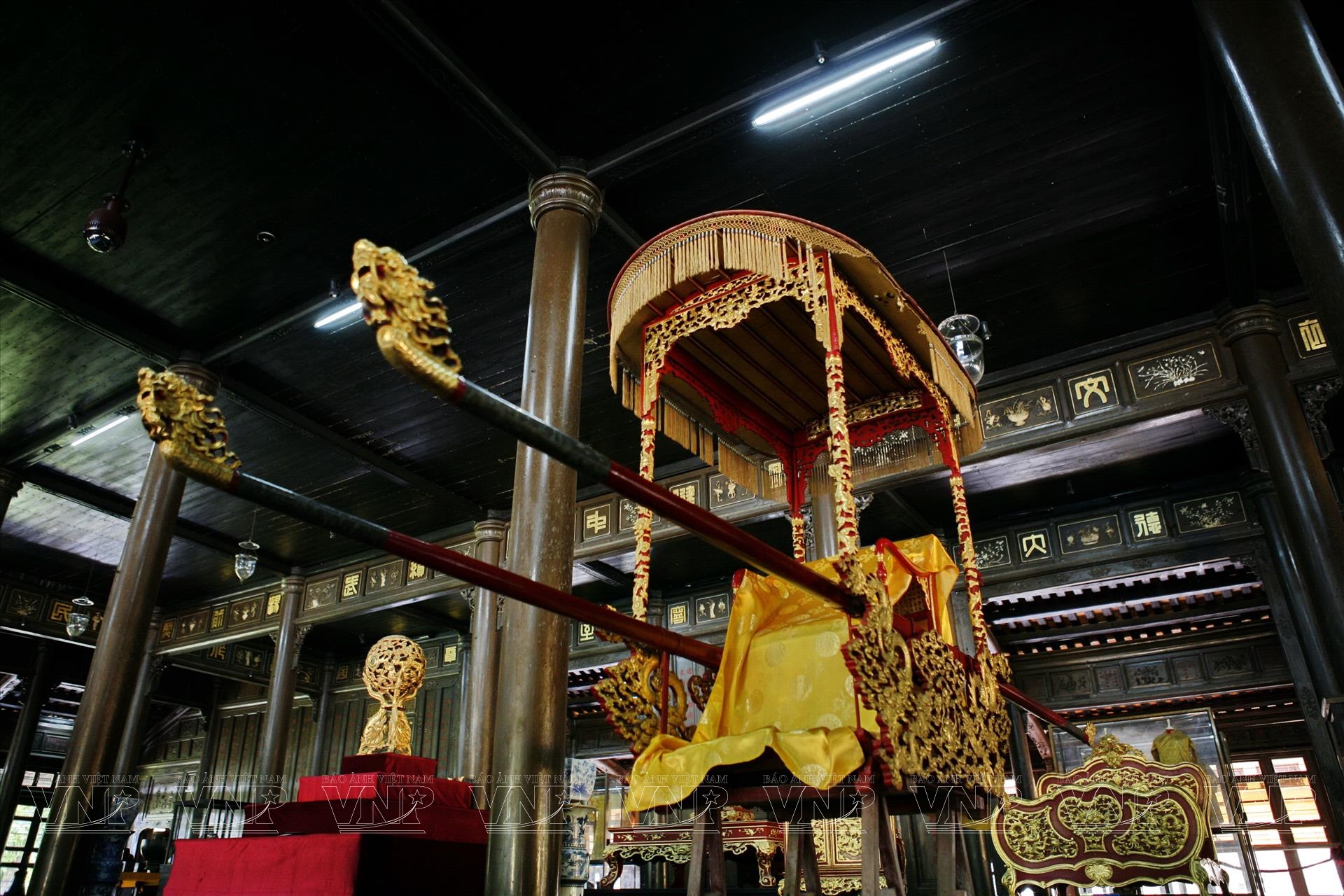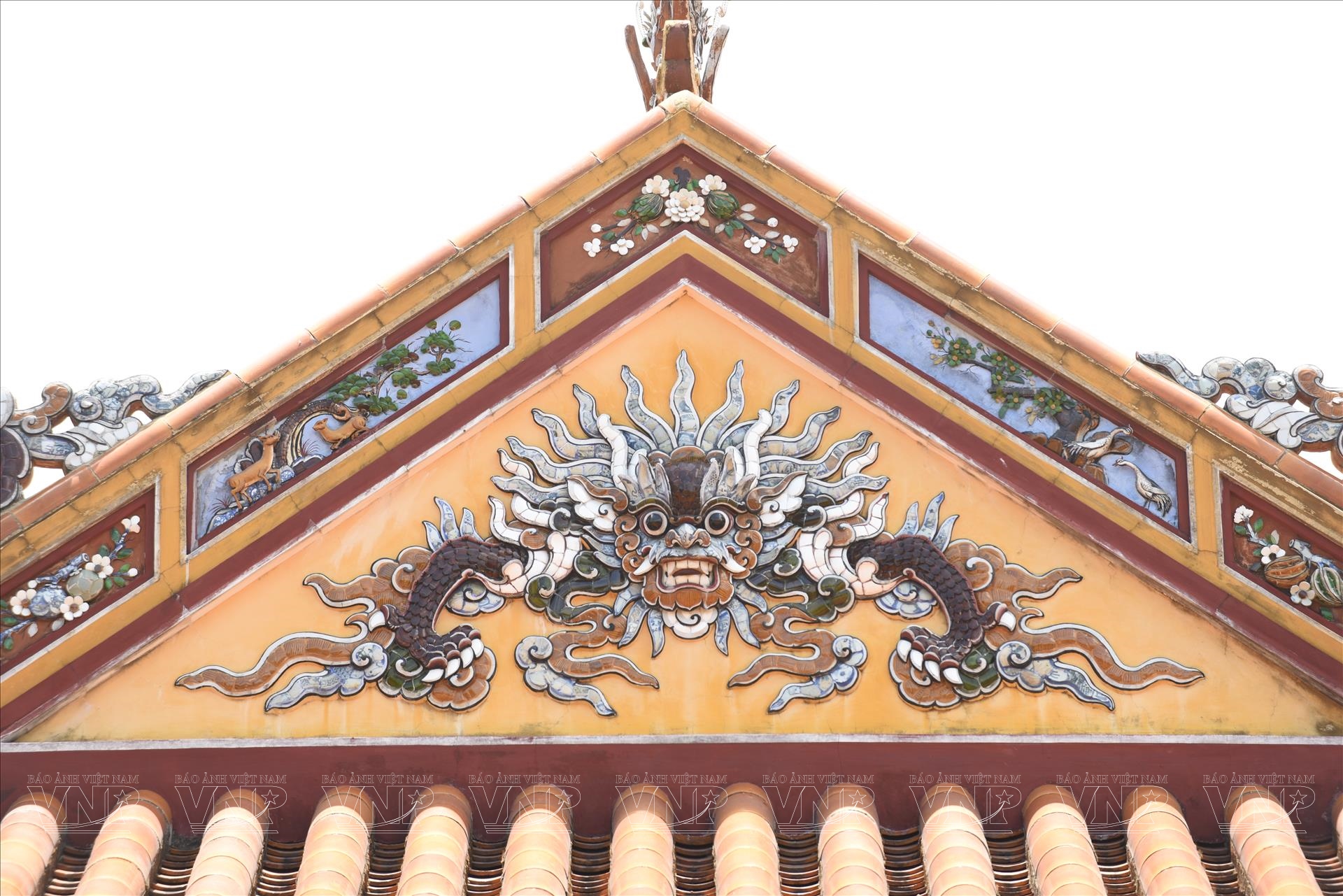Hue - The Land of the Dragon
In Eastern cultures, the dragon is a mythical creature revered as a symbol of royalty, strength, and power, closely associated with the image of a king. During the Nguyen Dynasty, under the skillful hands of artisans, along with the influence of royal cultural institutions and the openness of contemporary aesthetic thought, the image of the dragon reached its maximum richness in terms of themes, materials, and forms of expression. Therefore, the ancient capital of Hue, where the Nguyen Dynasty was based, is also known as the "land of the dragon".
In Vietnamese culture, the dragon is a sacred but unreal creature, the leader of the four sacred mythical creatures - the dragon, the kylin, the tortoise and the phoenix. It embodies the most beautiful characteristics of nine real animals, including the body of a snake, scales of a carp, head of a camel, antlers of a deer, paws of a tiger, claws of an eagle, ears of a bull, nose and mane of a lion, and tail of a rooster.
The image of the dragon in Vietnam appeared very early, perhaps most notably in the legend of “Con Rong chau Tien" (Offspring of the Dragon and the Fairy) from the Hung Vuong era, which tells of the origin of the Vietnamese people. Throughout the feudal periods of Vietnam, the image of the dragon was widely used, especially in architectural decoration and courtly art.
In Vietnam, in the early days, when the regulations on courtly art decoration were still strict, the dragon motif was reserved for the royal family. It primarily appeared in royal architecture palaces, temples, and mausoleums and on objects exclusively for the king, such as thrones, seals, imperial edicts, clothing, footwear, headwear, and ceremonial cups.
Later, stemming from the belief that besides being a symbol of the emperor's power, the dragon also represented sacredness, protection, prosperity, luck, goodness, favorable weather. The image of the dragon gradually became popularized and appeared more in folk cultural institutions such as communal houses, pagodas, houses, and even graves of ordinary people. However, the popularization of the dragon’s image also took place to a certain extent and according to certain conventions so as not to violate and trivialize the image of the sacred animal that belonged to the exclusive privilege of the royal family.
Researchers note a distinction between imperial and folk dragons. Imperial dragons, symbolizing the emperor, are traditionally depicted with 81 yang scales, 36 yin scales, a body curving in nine sections, and five-clawed feet. Folk dragons, on the other hand, often have three or four claws and may appear in various hybrid forms, such as the python-dragon, serpent-dragon, horse-dragon, horned dragon, or even transformations of other creatures and objects, like the carp, chrysanthemum or bamboo.
The Nguyen Dynasty dragons, from Vietnam's last feudal era, show clear stylistic influences. They inherited the slender, slightly curved horns of the Tran Dynasty dragons, and their dorsal fins are thin, long, and even, unlike the alternating large and small rays of the Tran period. While the Nguyen dragons also feature a sinuous, undulating body, the overall shape remains similar to the flexible, snake-like forms of the Ly and Tran dynasties.
Their tails echo the twisted style seen in the Le Trung Hung and Tay Son periods. The Nguyen dragons' cheeks are shorter and plumper than the long, slender cheeks of the Ly and Tran eras. Finally, their gills resemble sharp, pointed flames, different from the single swirl of the Ly Dynasty and the multiple swirls of the Tran.
The Nguyen Dynasty dragons refined the styles of earlier periods, becoming more majestic and powerful. They also displayed greater artistic variety, with depictions often focusing on specific body parts like the head or face, rather than the whole dragon.
The Nguyen Dynasty dragons are incredibly versatile in their depictions. They are featured in numerous distinct themes: dragons battling for a pearl, worshipping the sun, frolicking in water, and many more. Combinations with phoenixes, kylins, and symbols of longevity are common, as are imaginative transformations of plants into dragons. The dragons are crafted from a wide range of materials—metals, stone, wood, ceramics, using techniques like casting, carving, inlay, embroidery, and painting.
King Khai Dinh's reign (1916-1925) saw dragon decoration reach new heights, particularly with the introduction of pottery and porcelain mosaics. Hue artisans, with their exceptional talent, created not only intricate lime and plaster dragon sculptures but also dazzling, multi-colored dragon images using this mosaic technique. The Thien Dinh Palace at Khai Dinh's Tomb is a prime example, showcasing giant canopies and columns adorned with these shimmering dragons. Notably, the ceiling masterpiece, “Nine Dragons Hidden in Clouds,” is said to have been painted by artist Phan Van Tanh, who remarkably used both his hands and feet while lying on his back.
Over the years and overcoming the regulations of the time, by the Nguyen Dynasty, the image of the dragon had reached a strong and complete development in terms of content, form, and expression, so it can be affirmed that the dragon is a characteristic of Vietnamese culture during the Nguyen Dynasty. To this day, after the many ups and downs of history, the image of the Nguyen Dynasty dragons is still vividly and fully present on a massive heritage treasure trove of many types of art from the court to the folk, enough to be able to define Hue as the land of the dragon, the land of the renowned God's Capital for all time./.
- By Thanh Hoa/VNP Translated by Hong Hanh

















